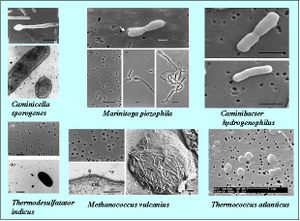Moraxella catarrhalis: Difference between revisions
(→Author) |
|||
| Line 24: | Line 24: | ||
==Ecology and Pathogenesis== | ==Ecology and Pathogenesis== | ||
Moraxella catarrhalis is specifically a human pathogen and it can cause infection in immunocompromised hosts, such as HIV/AIDS patients. Also, it can colonize the upper respiratory tract in children and infants more easily than adults and cause pneumonia and sinusitis. Moraxella catarrhalis enters the nasopharynx and can invade numerous cell types, including bronchial epithelium, small airway epithelium, and type II alveolar pneumocytes. It can migrate to the middle ear after it enters the nasopharnyx. It forms a biofilm in vitro, but it is not clear what the function of this biofilm is. The patient will experience symptoms of acute sinusitis, urethritis, septiciema, meningitis, maxillary sinusitis, conjunctivitis, and septic arthritis. Thie infection will cause exacerbation of chronic lung conditions. | |||
==References== | ==References== | ||
Revision as of 15:11, 22 July 2013
Classification
Kingdom: Bacteria Phylum: Proteobacteria Class: Gammaproteobacteria Order: Pseudomonadales Family: Moraxellaceae Genus: Moraxella Species: M. catarrhalis
http://www.ncbi.nlm.nih.gov/Taxonomy/Browser/wwwtax.cgi?mode=Info&id=480&lvl=3&lin=f&keep=1&srchmode=1&unlock [1]
Moraxella catarrhalis
Description and Significance
Give a brief description of the microorganism and explain why you think it is important. How does it relate to the other organisms in its phylum (bacteria and fungi) or group (archaea, virus, protist). Use the following for each reference in text (change number accordingly)--> [1]
Structure, Metabolism, and Life Cycle
Interesting features of its structure; how it gains energy (how it replicates, if virus); what important molecules it produces (if any), does it have an interesting life cycle?
Ecology and Pathogenesis
Moraxella catarrhalis is specifically a human pathogen and it can cause infection in immunocompromised hosts, such as HIV/AIDS patients. Also, it can colonize the upper respiratory tract in children and infants more easily than adults and cause pneumonia and sinusitis. Moraxella catarrhalis enters the nasopharynx and can invade numerous cell types, including bronchial epithelium, small airway epithelium, and type II alveolar pneumocytes. It can migrate to the middle ear after it enters the nasopharnyx. It forms a biofilm in vitro, but it is not clear what the function of this biofilm is. The patient will experience symptoms of acute sinusitis, urethritis, septiciema, meningitis, maxillary sinusitis, conjunctivitis, and septic arthritis. Thie infection will cause exacerbation of chronic lung conditions.
References
[1] EXAMPLE ONLY. REPLACE WITH YOUR REFERENCES. Takai, K., Sugai, A., Itoh, T., and Horikoshi, K. 2000. "Palaeococcus ferrophilus gen. nov., sp. nov., a barophilic, hyperthermophilic archaeon from a deep-sea hydrothermal vent chimney". International Journal of Systematic and Evolutionary Microbiology. 50: 489-500. http://ijs.sgmjournals.org/cgi/reprint/50/2/489
Author
Page authored by Aaron Yeshe, student of Mandy Brosnahan, Instructor at the University of Minnesota-Twin Cities, MICB 3301/3303: Biology of Microorganisms.

